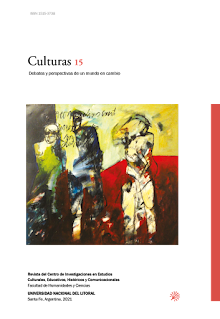Autor: Lizelle Bisschoff, University of Glasgow; lizelle.bisschoff@glasgow.ac.uk;
https://orcid.org/0000-0002-5820-0377 Keywords: Cyborg, African science, fiction film, Donna Haraway, African feminism, Wanuri Kahiu, Frances Bodomo .
Abstract: African feminist writers argue that black female bodies should be understood as interactions between materiality and the symbolic constructions of the body embedded within a given culture. They caution that an overemphasis on corporeality and embodiment denies subjectivity to black women. Responding to such concerns, contemporary African cultural and creative practitioners offer alternatives to continuing objectification and bodily stereotyping. In this article, I am particularly interested in the alternative visions of black female bodies presented in African speculative and science fiction film, visions which, I argue, engage colonial histories and local traditions in order to imagine a future inclusive of empowered female protagonists. I explore how the fictional configurations and cyborg imaginations of African sci-fi deconstruct and subvert the fixity, corporeality, fragility and captivity of the black female body. Drawing on African feminism and feminist science fiction in particular, I attempt to construct a theoretical framework through which to approach the representation of female bodies in sci-fi film from Africa. In the work of filmmakers such as Cameroonian Jean-Pierre Bekolo (Les Saignantes, 2005 and Naked Reality, 2016), Ghanaian filmmaker Frances Bodomo (Afronauts, 2014), Kenyan director Wanuri Kahiu (Pumzi, 2009) and South African filmmakers Michael Matthew (Sweetheart, 2010) and Amy van Houten (Elf, 2015), we find femalecentred fantastical narratives that recast African women as futuristic cyborgs. Reminiscent of Donna Haraway’s cyborg feminism of the late 20th century, these filmmakers adapt the genres of fantasy and sci-fi to speculate about alternative African pasts and futures.
Idioma: English
Publicación: 19 de septiembre 2019
Volumen: Interventions: The International Journal of Postcolonial Studies, Vol. 22 Issue 5, 2020
Enlace permanente














